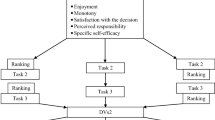Abstract
The article analyzes the development of the labor market with the active integration of artificial intelligence methods in various areas of human activity: from light industry to the public sector. A hierarchical structure of artificial intelligence methods is proposed, in which emphasis is placed on machine learning and the introduction of robots for everyday and routine tasks. A predictive model of the development of AI methods with a cumulative effect is presented, in the context of which the issues of creating and washing professions from the labor market are discussed: professions that are under maximum impact, for example, specialists performing monotonous operations, are noted. Attention is paid in detail to the development of an AI model for making decisions while reducing the number of employees, since now many enterprises are prone to excessive crowding out of the workforce after the introduction of a number of AI-based solutions. The model allows not only to estimate the amount of staff reduction, but also makes it possible to select the most suitable employees for their further retraining. In developing the model, attention was also paid to recommendations for selecting features for forecasting and selecting the optimal scheme for adapting the model to various types of enterprises.
Access this chapter
Tax calculation will be finalised at checkout
Purchases are for personal use only
Similar content being viewed by others
References
Applications of Artificial Intelligence in Top 10 Areas—Learnitude Technologies. https://learntechx.com/blog/applications-of-artificial-intelligence-in-top-10-areas. Accessed 06 Apr 2020
School of data analysis. https://yandexdataschool.com/. Accessed 06 Apr 2020
Bernard, A.: How AI is impacting the workplace. https://www.techrepublic.com/article/how-ai-is-impacting-the-workplace/. Accessed 06 Apr 2020
Orlov, S.: Sberbank replaces 70% of mid-level managers with robots—Computerra (2018)
Averkin, A.N., Haase-Rapoport, M.G.P.D.A.: Explanatory dictionary of artificial intelligence. Radio Commun. (1992)
Artificial Intelligence Techniques—Top 4 Techniques of Artificial Intelligence. https://www.educba.com/artificial-intelligence-techniques/. Accessed 06 Apr 2020
Reisinger, D.: A.I. Expert Kai Fu Lee: 40% of Jobs Will Be Lost to AI, Robots—Fortune (2019). https://fortune.com/2019/01/10/automation-replace-jobs/
AI: brave new worlds - (LU) Federated Hermes. https://www.hermes-investment.com/lu/insight/outcomes/ai-brave-new-worlds/. Accessed 06 Apr 2020
Garvey, C.: Broken promises and empty threats: the evolution of AI in the USA. Technology’s Stories, pp. 1956–1996 (2018). https://doi.org/10.15763/jou.ts.2018.03.16.02
Goodfellow, B.: The Back-Propagation Algorithm. MIT press (2016)
Friedman, J.H.: Reitz lecture greedy function approximation: a gradient boosting machine. Ann. Statist. 29(5), 1189–1232 (2001)
How the future of computing can make or break the AI revolution—World Economic Forum, https://www.weforum.org/agenda/2019/06/how-the-future-of-computing-can-make-or-break-the-ai-revolution/. Accessed 06 Apr 2020
Press, G.: Is AI Going To Be A Jobs Killer? New Reports About The Future Of Work. https://www.forbes.com/sites/gilpress/2019/07/15/is-ai-going-to-be-a-jobs-killer-new-reports-about-the-future-of-work/#75cb5e6bafb2. Accessed 06 Apr 2020
Friedman, J.H.: Greedy Function Approximation: A Gradient Boosting Machine. Stanford University, Stanford (1999)
Primary ML software used by top-5 teams on Kaggle: Keras, LightGBM, XGBoost, PyTorch: learn machin elearning. https://www.reddit.com/r/learnmachinelearning/comments/b91f8w/primary_ml_software_used_by_top5_teams_on_kaggle/. Accessed 06 Apr 2020
Shcherbina, E.: Yandex’s new machine learning method can work with categories. Tass
How to Make Employee Data Your Company’s Most Powerful Tool—Best Money Moves. https://bestmoneymoves.com/blog/2018/02/26/how-to-make-employee-data-your-companys-most-powerful-tool/. Accessed 06 Apr 2020
Breiman, L., Friedman, J.H., Olshen, R.A., Stone, C.J.: Classification and regression trees. In: Wadsworth & Brooks/Cole Advanced Books & Software, Monterey (1984)
Tianqi Chen, C.G.: Guestrin XGBoost: a scalable tree boosting system. In: KDD 2016: Proceedings of the 22nd ACM SIGKDD International Conference on Knowledge Discovery and Data Mining, pp. 785–794 (2016). https://doi.org/10.1145/2939672.2939785
Chauhan, N.S.: Decision tree algorithm. https://towardsdatascience.com/decision-tree-algorithm-explained-83beb6e78ef4. Accessed 22 Jan 2020
Acknowledgements
This paper was prepared under financial support of the Russian Science Foundation (Grant No. 18-18-00099).
Author information
Authors and Affiliations
Corresponding author
Editor information
Editors and Affiliations
Rights and permissions
Copyright information
© 2021 The Author(s), under exclusive license to Springer Nature Switzerland AG
About this paper
Cite this paper
Zhak, R., Kolesov, D., Leitão, J., Akaev, B. (2021). Uncertainty Decision Making Model: The Evolution of Artificial Intelligence and Staff Reduction. In: Schaumburg, H., Korablev, V., Ungvari, L. (eds) Technological Transformation: A New Role For Human, Machines And Management. TT 2020. Lecture Notes in Networks and Systems, vol 157. Springer, Cham. https://doi.org/10.1007/978-3-030-64430-7_5
Download citation
DOI: https://doi.org/10.1007/978-3-030-64430-7_5
Published:
Publisher Name: Springer, Cham
Print ISBN: 978-3-030-64429-1
Online ISBN: 978-3-030-64430-7
eBook Packages: Intelligent Technologies and RoboticsIntelligent Technologies and Robotics (R0)




